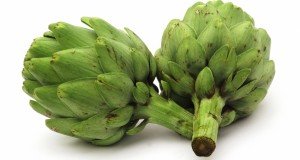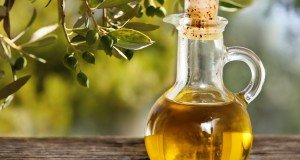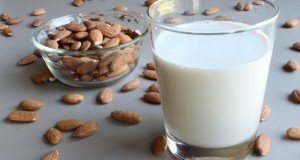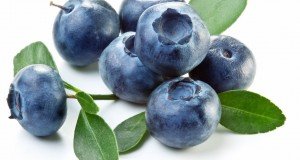Maqui berry extract reduces dangerous blood sugar spikes
(NaturalHealth365) Over 30 million Americans currently have diabetes, while 84 million more have prediabetes, or elevated blood sugar that can lead to diabetes within two years. Normally, we’re told through the ‘lamestream media’ that drugs are the only way to properly deal with this issue. Yet, we know of many ways to stabilize blood sugar (without drugs!) – like consuming the maqui berry.
This is an alarming statistic: According to the U.S. Centers for Disease Control and Prevention (CDC), a shocking 51 percent of all Americans 65 and older are prediabetic. Do all of these people have a diabetic drug deficiency? (of course not!)
A ‘pill for every ill’ is not the answer. In fact, the best solution for blood sugar problems is to change our lifestyle and improve the diet. Let’s see how the maqui berry is a real winner.
Key point: Elevated glucose and insulin levels after meals can increase your risk of diabetes and heart disease
Insulin helps transport glucose to the cells for energy production or storage. However, when the cells lose the capacity to respond to insulin, the pancreas reacts by producing still more insulin – which in turn can eventually trigger chronic degenerative conditions such as type 2 diabetes, high blood pressure, atherosclerosis, chronic inflammation, obesity and cancer.
Blood sugar spikes, which can persist for two hours after a meal (or longer)0, can cause an inflammatory response – even in those who aren’t diabetic. And the resultant damage to the body is widespread – spikes can cause cataracts and kidney damage, along with a stiffening of heart and arterial tissues that increases the risk of stroke, heart attack and heart failure.
In addition, spikes can cause glucose to chemically bond with proteins and sugars in the body, a process known as glycation. Researchers have found that glycation accelerates the aging process.
Researchers have learned that elevated (after-meal) blood glucose can predict future disease – even in people whose fasting blood sugar levels are normal. Most blood tests for diabetes only measure fasting blood sugar levels – which can allow the problem of after-meal blood sugar surges to go undetected.
Underreported good news: Maqui berry extract shows scientific promise
In a 2014 placebo-controlled study of patients with moderate glucose intolerance, researchers found that 200 milligrams of maqui berry, given half an hour before a meal of rice, caused insulin and glucose levels to rise more slowly, and to peak at lower levels.
The maqui berry extract reduced glucose levels by 15 percent and insulin levels by 56 percent – impressive results that were achieved within the hour. Imagine if this were coupled with better food choices?!
The researchers believe that maqui berry extract owes it powers to phytochemicals called delphinidins. These compounds promote the action of GLP-1, or glucagon-like peptide, a hormone that delays stomach emptying, lowers post-meal glucose and moderates insulin spikes.
A second study, published in 2016 in BioMed Research International, confirmed the blood sugar-stabilizing effects of maqui berry. A maqui berry extract called Delphinol, given an hour before oral glucose tolerance tests, significantly lowered blood sugar and insulin. The team theorized that the extract might work by improving insulin sensitivity.
Another study showed that maqui berry extracts, given for 90 days, reduced A1c levels in prediabetics after 60 days. And, an animal study demonstrated that maqui berry extracts lowered fasting blood glucose levels so dramatically that diabetic rats reached values indistinguishable from healthy, non-diabetic rats.
Researchers say: Maqui berries edge out acai berries for antioxidant capacity
Maqui berry, scientifically known as Aristotelia chilensis and sometimes called Chilean wine berry, is indigenous to the temperate rainforest region in southern Chile. The berries’ intense dark purple coloration is a testament to their high content of anthocyanins, natural plant pigments with strong antioxidant effects.
In fact, maqui berries are considered by some to be the most antioxidant-dense fruits in the world, scoring an amazing 27,600 units per 100 grams on the Oxygen Radical Absorbance Capacity (ORAC) Scale – a score that puts them ahead of acai berries.
Their sky-high content of antioxidants hasn’t gone unnoticed by scientists.
In a study published in 2015 in the Journal of the American College of Nutrition, researchers found that the maqui berry extract Delphinol reduced levels of oxidative stress in several groups of participants – including healthy adults, adult smokers and overweight adults.
In addition to delphinidins and anthocyanins, maqui berries are also high in fiber and rich in the antioxidant vitamin C – along with the essential minerals calcium, iron and potassium.
Eating maqui berries can support an “anti-inflammatory lifestyle”
Along with their antioxidant powers, maqui berries boast anti-inflammatory properties – that have been shown, in studies, to help to inhibit COX-2 – a pro-inflammatory enzyme.
Maqui berries also show promise in lowering blood pressure, improving blood vessel function, and maintaining the health of arterial linings. In addition, they help reduce levels of harmful LDL cholesterol, and may even promote weight loss.
And, for those concerned about dementia: Like anthocyanin-rich blueberries, maqui berries may also slow cognitive decline.
Although fresh maqui berries aren’t easily available, you can purchase them in dried or powdered form. Maqui berries are also available as a juice – making it easy to add more antioxidative punch to smoothies.
You can also get the benefits of maqui berries in the form of an extract. Natural health experts recommend a formulation standardized to 25 percent delphinidins and 35 percent total anthocyanins.
Simply put, after-meal blood sugar spikes – which often go undetected – can present a major threat to our health. Thankfully, the surprisingly powerful effects of maqui berries on elevated blood sugar make them an effective natural ally.
Sources for this article include:











